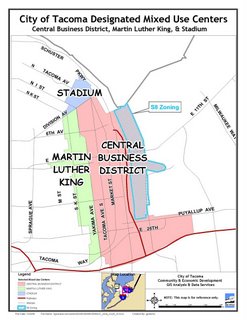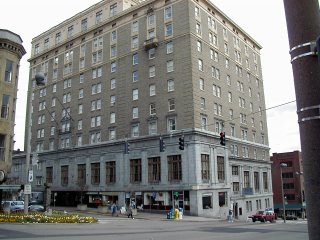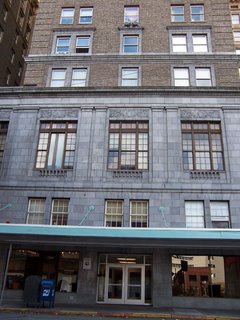 Much--perhaps too much--has been already written about what some are now calling the Washington History Museum's "wall of shame" and its opposition by downtown stakeholders, led by blogger Kevin Freitas (who first broke the issue).
Much--perhaps too much--has been already written about what some are now calling the Washington History Museum's "wall of shame" and its opposition by downtown stakeholders, led by blogger Kevin Freitas (who first broke the issue).City of Tacoma officials issued a stop-work order earlier this week on a brick wall under construction which WSHS intended to commemorate those who helped save Union Station from demolition in the early 1990s. The wall would partially block the view of the Chihuly Bridge of Glass from Pacific Ave. and virtually preclude any hope of someday opening direct pedestrian access.
We're pleased to see how much the recommendations from Project for Public Spaces' workshop (which we co-sponsored) has informed debate on this issue--one more reason to remain confident that the final report will not become "shelf art" anytime soon. Participants in that event--like Erik Bjornson, who is heading up one of the implementation committees--will continue to carry forward the effort begun this past May.
We're not so pleased to see the ongoing lack of communication that seems to plague so much in downtown. Museum officials sought and received a building permit and approval from the Landmarks Preservation Commission without any objection from City officials. This is reminiscent of the lack of coordination between the City and Sound Transit that will lead to yet another tearing up of Pacific Ave. in the near future. Isn't it time we started doing better?








